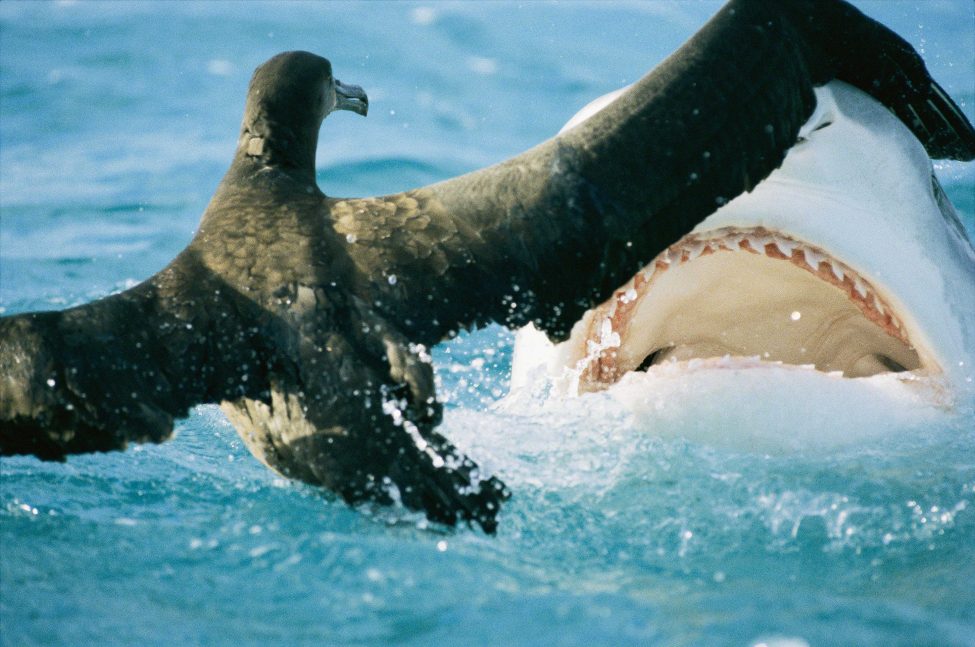Unpredictable sharks
Genetic diversity is a critical factor in determining the conservation status of any given species. Mahmood Shivji of the Save Our Seas Shark Research Center writes about the gene pool of highly migratory tiger sharks and the movement patterns of the fastest shark in the sea – the shortfin mako.
Photo by Bill Curtsinger | National Geographic Creative
Genetic diversity is a critical factor in determining the conservation status of any given species. Mahmood Shivji of the Save Our Seas Shark Research Center writes about the gene pool of highly migratory tiger sharks and the movement patterns of the fastest shark in the sea – the shortfin mako.
Tiger sharks show unexpected global population patterns
A key issue in the world of managing and conserving globally distributed shark species that are captured in fisheries is finding the answer to a basic question: how many populations of a particular species are there? This typically refers to identifying how many genetic stocks exist, where they occur and how different they are (genetically) from each other.
Why is this important? A fundamental paradigm in managing exploited wildlife (on land and in the sea) is to conserve genetic variation in a species, since it is this variation that can provide a buffer against extinction. In other words, genetic variation allows some individuals in a species to adapt to changes in their environment that might wipe out other individuals. And the individuals that can adapt because of their genetic make-up will be able to survive, find mates and reproduce, leaving offspring with their genes – the very definition of biological fitness (also known as Darwinian fitness) – and thus ensuring survival of the species.
Sharks are no exception when it comes to their management. It is generally assumed that the large-bodied sharks that migrate vast distances are likely to interbreed with one another across large sections of the ocean – and therefore belong to either a single stock or, at most, very few genetic stocks. After all, if you can swim huge distances, the chances of running into prospective mates all over the place should be high. And both female and male sharks are known to mate with multiple partners, so no worries there. But are these long-distance genetic romances typical?
Dr Andrea Bernard, a research scientist at the Save Our Seas Shark Research Center (SOSSRC), investigated this question in relation to the magnificent tiger shark. Previous and ongoing research by scientists from the Guy Harvey Research Institute and the SOSSRC on tracking tiger sharks shows that these apex predators are quite at ease undertaking enormously long migrations. Tiger sharks are also well known to be non-fussy about their diet – they are not too discriminating when it comes to selecting things to eat – and they are found in a range of habitats, from shallow coral reef to truly oceanic ecosystems. This combination of lifestyles suggests that tiger sharks are well equipped to be large-scale ocean wanderers – and the more sea you cover, the more mating opportunities you should encounter, right? This being the case, Andrea investigated the prediction that tiger sharks would be amorously exchanging genes across huge expanses of ocean and therefore would consist of only a single genetic population – or at best very few populations that are genetically different.
But who says that tiger sharks are predictable? By looking at DNA markers from tiger sharks from across most of the species’ global distribution, Andrea found that tiger shark males have a genetically roving disposition, freely exchanging genes (via mating) across much of the Indo-Pacific – although interestingly enough, not so much between the Indo-Pacific and Atlantic oceans! So there appears to be a barrier that prevents males from these two oceanic regions from routinely crossing over and fraternising with the females, thus keeping populations from these two areas genetically different. The picture with tiger shark females is quite different and equally interesting. Despite growing even bigger in size than males and therefore seeming physically capable of just as extensive travels, the DNA markers indicated that tiger shark females prefer to stay closer to home – or at least if they do wander far away, they return to specific areas to give birth. This behaviour of the females serves to create even more populations of genetically different tiger sharks across the species’ distribution.
The bottom line revealed by DNA is that despite the tiger shark’s ability to travel enormous distances, its impressive facility for using very different habitats (shallow coastal to deep, open-ocean environments) and its quite unfussy dietary preferences, this species still forms many more than anticipated genetically differentiated populations. The management implication is that in order to conserve these different genetic pools (and thus genetic variation) of tiger sharks, attention will have to be paid, via fishery management practices, to ensuring that none of the individual populations get extirpated due to inadvertent overfishing. Andrea’s work on this and related findings on tiger sharks was recently published in the journal Molecular Ecology.
SOSF Shark Research Center
The SOSF Shark Research Centre (SOSF-SRC) is located in Florida and was established at Nova Southeastern University in 2009 by directive of the founder of the Save Our Seas Foundation.
The centre focuses mainly on scientific research aimed at increasing knowledge to aid the conservation, management and understanding of sharks and rays worldwide.
A hallmark of the SOSF-SRC is that it specialises in taking integrative, multi-disciplinary approaches to research and conservation, which include combining high-tech genetics, genomics and field work to illuminate holistically aspects of shark and ray science that would be difficult to decipher using single-discipline approaches alone.
The SOSF-SRC also serves as an academic unit within Nova Southeastern University and as such its function includes the training of students from around the world in marine research and conservation. Although advanced scientific research is the main focus of the SOSF-SRC, our staff also undertake educational and outreach activities involving primary (US middle) and secondary (US high) school students.

